

— Products —
 Consumer hotline +8618073152920
Consumer hotline +8618073152920 WhatsApp:+8615367865107
Address:Room 102, District D, Houhu Industrial Park, Yuelu District, Changsha City, Hunan Province, China
Agricultural Sensors
The soil heat flux sensor measures temperature gradients using a thermopile consisting of two different metallic materials. Thermopile detectors receive thermal radiation, which can generate a thermoelectric potential between junctions of two dissimilar materials.
Tel/WhatsApp:+8615367865107
Email:Arvin@niubol.com +Nearly 100 partner company in more than 68 countries. We are committed to providing high-quality, practical products to meet your needs and help you solve problems.Product Details
Soil heat flux sensor (also known as "soil heat flux plate", "heat flow meter") is mainly used to measure the energy balance of the soil and the thermal conductivity of the soil layer.The soil heat flux sensor measures temperature gradients using a thermopile consisting of two different metallic materials. Thermopile detectors receive thermal radiation, which can generate a thermoelectric potential between junctions of two dissimilar materials.The heat flux sensor outputs in the form of voltage, the voltage is proportional to the heat flux, the output voltage is a millivolt signal, and the millivolt signal is read by the data acquisition system.
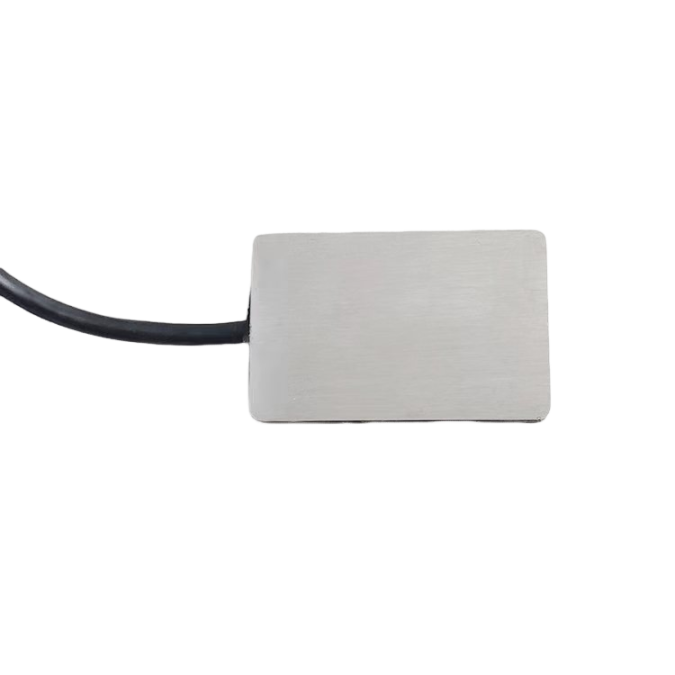
I. Soil Soil Heat Flux Sensor Product Overview:
Soil Heat Flux Sensor, also known as Heat Flux Plate, Soil Heat Flux Plate, Heat Flux Meter and other names, is an instrument used to measure heat flux, which can be used for internal soil measurements. It passes through a thermoelectric stack and outputs in the form of a voltage which is proportional to the heat flux. It is easy to operate and is particularly suitable for measuring the thermal conductivity of soils and building walls and glass walls. The soil heat flux value is obtained by using a heat flux plate measured at 2cm buried in the soil. During the year, it changes with the change of seasons, summer soil heat flux is positive, both heat into the soil layer, and the amount of value is larger; in winter, the soil heat flux is negative, the heat in the soil to the atmosphere to release, but the amount of value is smaller.
Second, the soil heat flux sensor scope of application:
Soil heat flux can be widely used in environment, agriculture, forestry, planting, construction and other fields.
Soil heat flux sensor technical parameters :
Supply voltage: □DC12-24V □DC 5V
Output signal: □ Current type 4-20mA □ 0-2V □ RS485
◆Measuring range: -200 to 200 w/m2
◆ Internal resistance less than 300Ω
◆Measurement accuracy: less than 5%
◆ Heat flow calculation formula
Heat flow (w/m2) = Coefficient (w*m-2/mv) * Output (mv)
◆Working current:12V power up about 26mA
IV. Functional features
1. Compact size, fast and accurate measurement
2. Low power consumption design, using reasonable power consumption control mode
3. Stable performance
Soil Soil Heat Flux Sensor
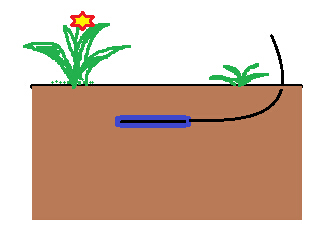
(I) Measuring method in soil
Should make the plate surface perpendicular to the direction of heat flow, placed horizontally in the soil layer. Sensor burial depth, usually from the natural subsurface 3-10 cm deep, should try to avoid setting directly on the soil surface, because the natural subsurface is not a geometric plane, the surface of the small undulations will make the sensor readings to lose representativeness, while the sensor's upper surface in direct contact with the air may also produce radiation errors. Usually, a representative lot is selected at the observation site, and a profile is dug vertically downwards with a spade.
From the soil surface down along the profile measured out the required depth, and then hollowed out along the horizontal direction, the size of which can be placed on the heat flow plate, and so that the sensor up and down the two sides of the surface can maintain good contact with the soil, the lead along the profile and then backfill the soil. However, it should be noted that the burial depth of the heat flow plate should be the distance between its centre line and the soil surface.
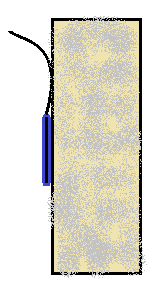
(ii) Measurement method on the wall
Firstly, the surface of the heat flow sensor is evenly coated with petroleum jelly, and the heat flow sensor coated with petroleum jelly is pasted on the surface of the wall, so that the wall and the heat flow sensor can make a close contact, and stay for a few minutes, and then the measurement can be started after the heat flow sensor is adapted to the ambient temperature.
Instructions for use:
The installation of the soil heat flux sensor should select a representative place within the research range. If the surface layer is more complex, the sensor should be placed in an effective part with a lower coverage and a more balanced soil heat flux.
During use, be sure to pay attention to the front and back of the heat flux sensor, the correct placement is the front side up.
First, use a small shovel to dig a vertical hole, determine the distance from the heat flux sensor to the top of the ground according to the user's requirements, then use a small knife to make a horizontal cut in the side of the hole, try to keep the soil surface intact, or the minimum Without being damaged, insert the heat flux sensor into the horizontal cutout. In order to obtain accurate soil heat flux, it is necessary to ensure that the heat flux plate is in full contact with the soil.
Remember, do not lead the output wire of the heat flux plate directly to the soil surface. A small section of the output wire of the heat flux plate should be buried in the soil to reduce the heat conduction of the output wire.
After all sensors are installed, be sure to return the excavated soil to its original position as soon as possible.
During the year, the soil heat flux changes with the change of seasons. In summer, the soil heat flux is positive, that is, there is heat entering the soil layer, and the amount is large; in winter, the soil heat flux is negative, and the soil heat flux is negative. The heat is released to the atmosphere, but in small amounts.
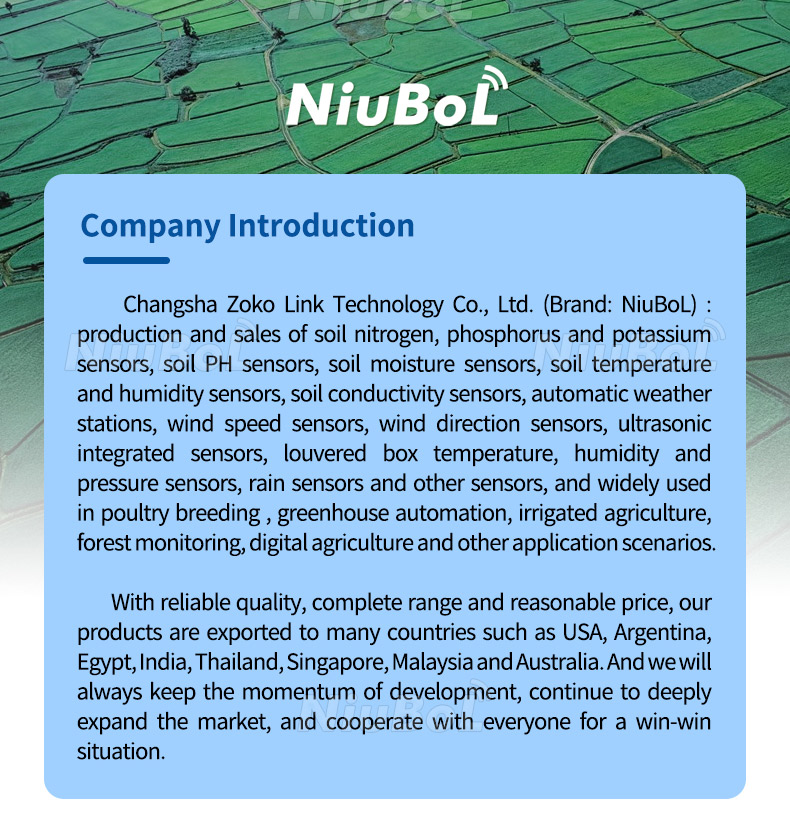
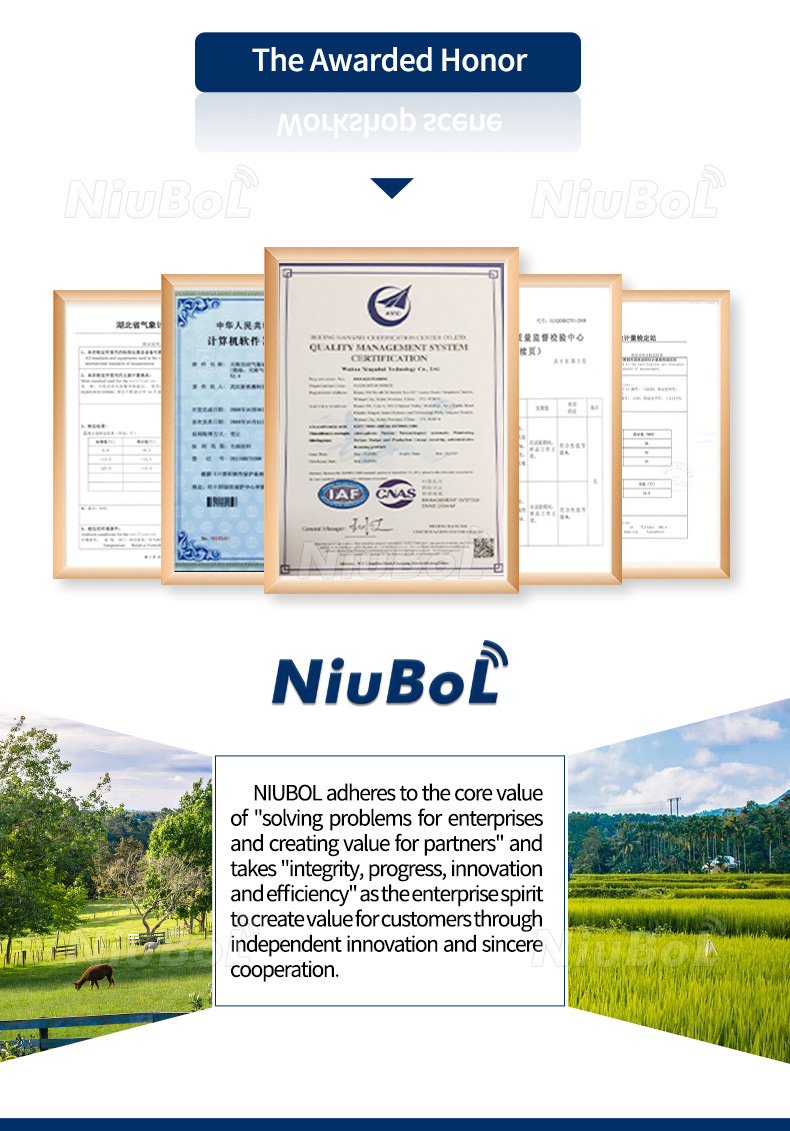
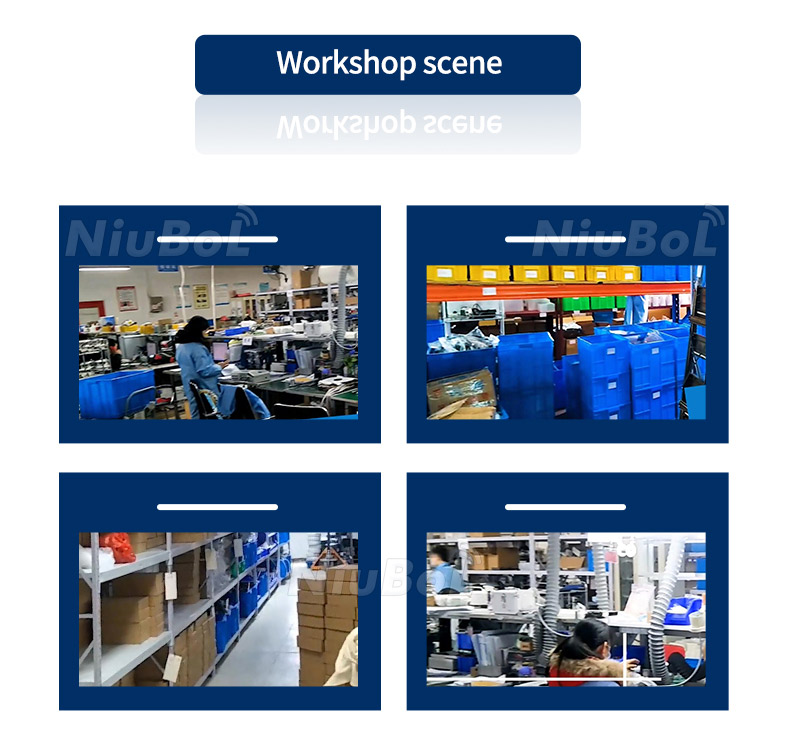
Prev:Leaf Wetness Sensor For Smart Agriculture
Next:Soil salinity conductivity integrated sensor RS485/4-20mA suitable for smart agriculture
Sensors & Weather Stations Catalog
Agriculture Sensors and Weather Stations Catalog-NiuBoL.pdf
Weather Stations Catalog-NiuBoL.pdf
Related recommendations
 Soil Moisture Temperature sensor for irrigation
Soil Moisture Temperature sensor for irrigation Soil pH sensor RS485 soil Testing instrument soil ph meter for agriculture
Soil pH sensor RS485 soil Testing instrument soil ph meter for agriculture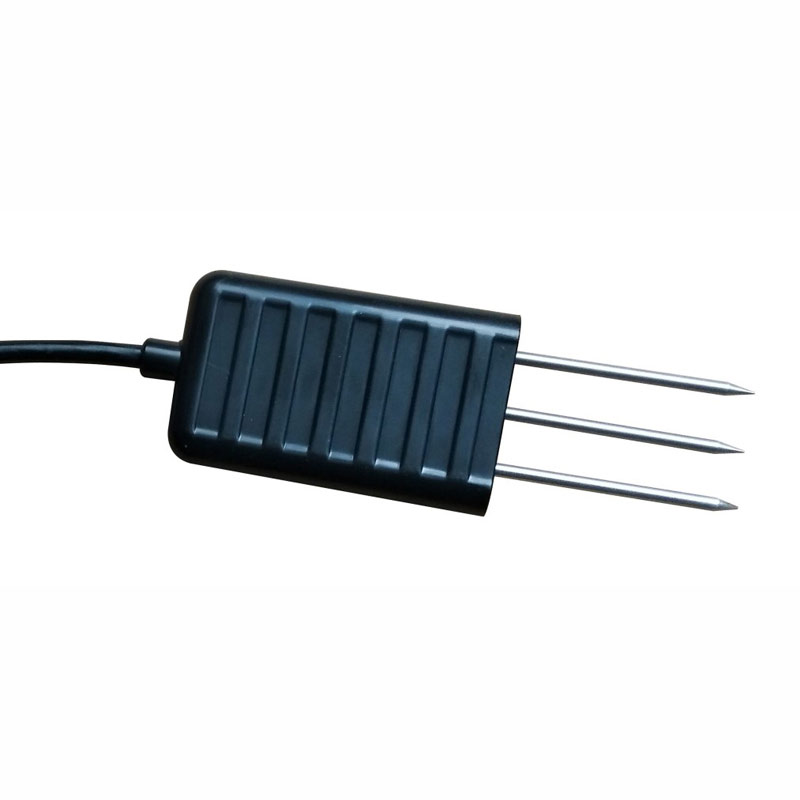 Soil NPK Sensor RS485 Meter Soil Nutrient Fertility Tester Soil Sensor For Precision Agriculture
Soil NPK Sensor RS485 Meter Soil Nutrient Fertility Tester Soil Sensor For Precision Agriculture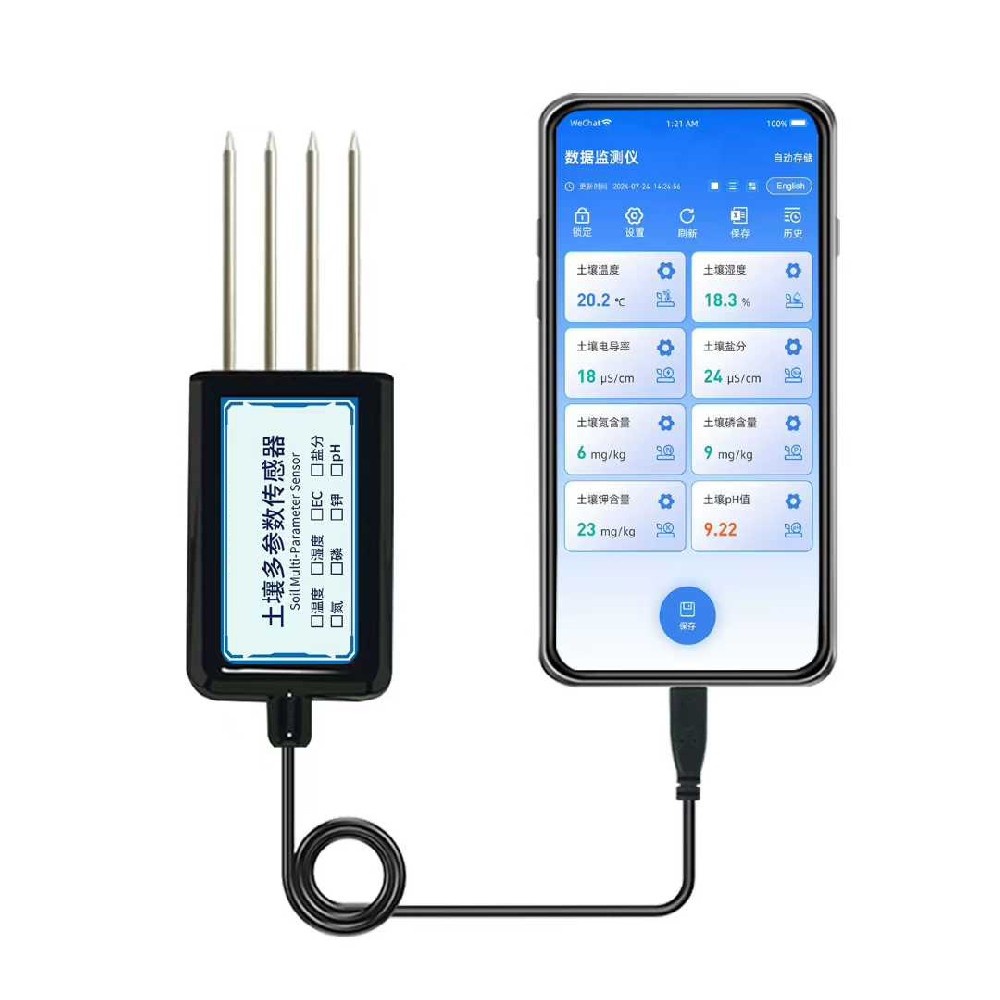 8-in-1 Soil Sensor Portable Type-C/USB Soil Multi-Parameter Tester & Analyzer
8-in-1 Soil Sensor Portable Type-C/USB Soil Multi-Parameter Tester & Analyzer Soil Temperature Moisture Tester Modbus RS485 FDR Soil Sensor For Precision Agriculture
Soil Temperature Moisture Tester Modbus RS485 FDR Soil Sensor For Precision Agriculture 3-in-1 Soil Temperature Humidity EC Sensor Soil FDR Moisture Meter For Garden/Farm/Greenhouse/Agriculture
3-in-1 Soil Temperature Humidity EC Sensor Soil FDR Moisture Meter For Garden/Farm/Greenhouse/Agriculture
Screenshot, WhatsApp to identify the QR code
WhatsApp number:+8615367865107
(Click on WhatsApp to copy and add friends)
